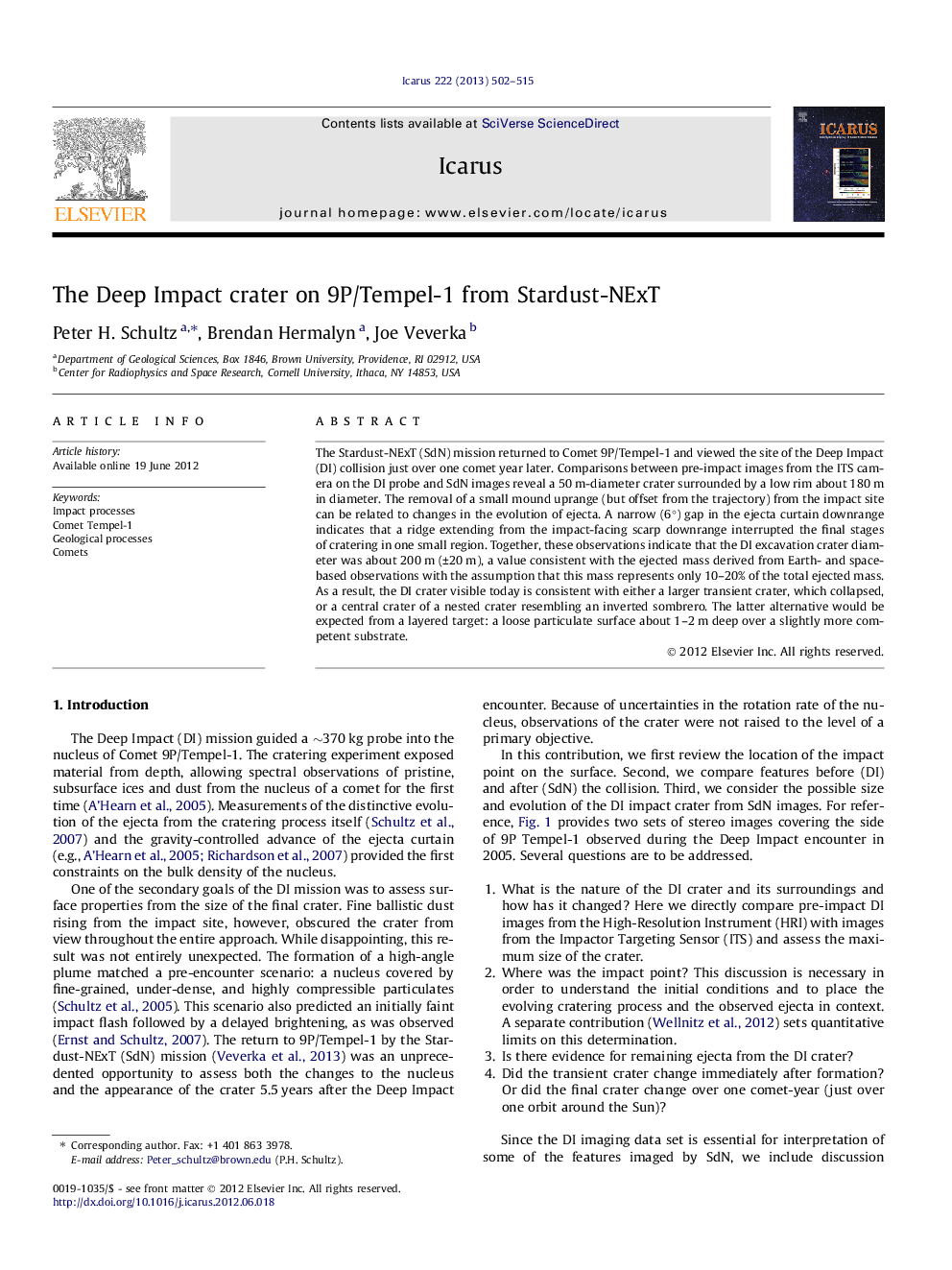| Article ID | Journal | Published Year | Pages | File Type |
|---|---|---|---|---|
| 1773315 | Icarus | 2013 | 14 Pages |
The Stardust-NExT (SdN) mission returned to Comet 9P/Tempel-1 and viewed the site of the Deep Impact (DI) collision just over one comet year later. Comparisons between pre-impact images from the ITS camera on the DI probe and SdN images reveal a 50 m-diameter crater surrounded by a low rim about 180 m in diameter. The removal of a small mound uprange (but offset from the trajectory) from the impact site can be related to changes in the evolution of ejecta. A narrow (6°) gap in the ejecta curtain downrange indicates that a ridge extending from the impact-facing scarp downrange interrupted the final stages of cratering in one small region. Together, these observations indicate that the DI excavation crater diameter was about 200 m (±20 m), a value consistent with the ejected mass derived from Earth- and space-based observations with the assumption that this mass represents only 10–20% of the total ejected mass. As a result, the DI crater visible today is consistent with either a larger transient crater, which collapsed, or a central crater of a nested crater resembling an inverted sombrero. The latter alternative would be expected from a layered target: a loose particulate surface about 1–2 m deep over a slightly more competent substrate.
► New constraints established for the size of the Deep Impact (DI) excavation crater. ► NExT images reveal changes in surface features expressed in DI ejecta curtain. ► The DI transient crater was 200 m in diameter but has collapsed. ► Or the DI crater was a nested crater due to a layered target.
